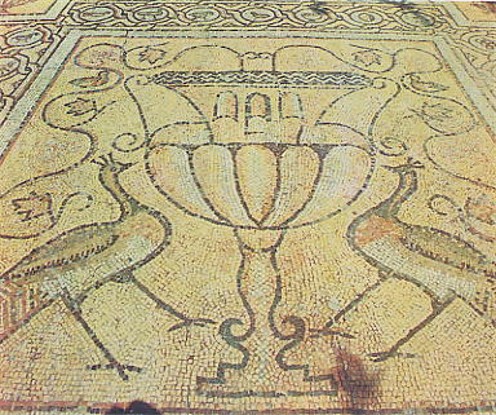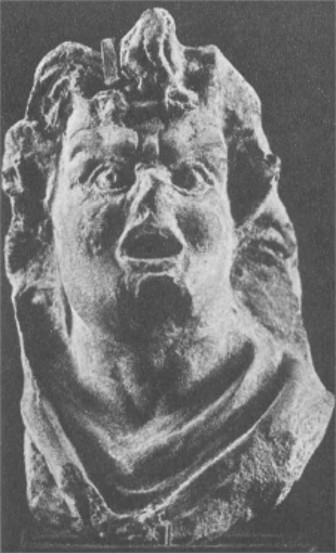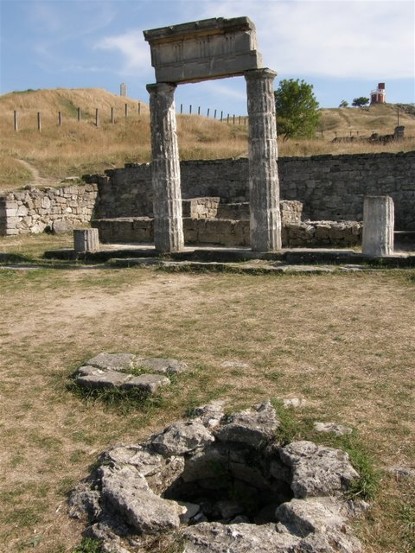Greek art
Greek art. In Ukraine Greek art objects are found mostly along the Black Sea coast and in the Crimea. Examples of ancient Greek art from the 7th–6th century BC to the 2nd–3rd century AD have been found at the sites of former Greek colonies (see Ancient states on the northern Black Sea coast) such as Tyras, Olbia, Chersonese Taurica, Theodosia, Panticapaeum, Phanagoria, Taman, and Gorgippia. The most prominent influence is that of the Ionian colonists from Asia Minor, particularly from Miletos, Priene, and Herakleia. But samples of Athenian art dating back to the 5th century BC are also present.
Greek art attained its widest influence in the 4th–3rd century BC, although it reached some regions only in the Hellenistic period. Its influence spread as far as the Kyiv region, Kharkiv region, Poltava region, Zaporizhia region, Podilia, and Galicia, and left its mark on the art and crafts of the local populations such as the Scythians, Sarmatians, Alans, Roxolani, and Antes. At the same time these autochthons influenced Greek art in the Black Sea colonies, especially the clothing, women’s ornaments, and jewelry of the colonists. The fusion of Greek and indigenous elements resulted in an art particular to the Greek colonies in Ukraine.
Greek cities on the Black Sea coast were surrounded by walls with gates and towers; those of Olbia, Ilurat, and Chersonese Taurica are well preserved. Within the walls there were fine civic buildings, temples, and private homes with pools and fountains. The foundations of some of these have been preserved. Excavations of various types of graves, including vaulted graves built of wedge-shaped stone that were unknown in Greece, have yielded much information about Greek construction methods. The burial chambers of the kurhans Zolota Mohyla and Tsarskyi kurhan near Kerch in the Crimea, dating back to the 4th century BC, are masterpieces of construction.
A few sculptural remnants, which are not older than the 4th century BC, have been found. A number of better-preserved fragments from the Hellenistic period, carved in the style of Praxiteles, Polyclitus, or Scopas, were found in Olbia (a marble statue of Artemis) and Chersonese Taurica. A larger number of grave stelai with carved or painted representations of the deceased and the tools of their trade have been preserved. A Chersonese stele with a portrait of a youth is a unique relic of 5th-century carving. Marble reliefs depicting the exploits of Hercules, Dionysius, Silenus, the Satyrs, and the Maenads date back to the 2nd century AD. Many terra-cotta statuettes associated with the cults of Demeter, Astarte, and Aphrodite or depicting everyday activities and scenes have been found. Ceramic products with figures painted in the so-called black and red style have been discovered in Olbia, Kerch, and Izmail. Ceramic griffons, eagles, sphinxes, etc, display eastern and local artistic features. From the scenes that are engraved on the famous gold vase from the Kul Oba kurhan and the silver amphora from the Chortomlyk kurhan, it is evident that the artists were familiar with everyday life of the Scythians or Roxolani. The artistic etchings on bronze articles, mostly from Olbia, are in the Ionic style and probably were made locally. Objects made later are decorated in the style of the Hellenistic and Roman period.
There is a large variety of fine jewelry such as gold earrings with pendants, masks, bracelets, and rings with precious stones. Pontic coins of the 4th century BC from Panticapaeum are considered to be the highest achievements of ancient engraving. Many Greek art objects were lost at the end of the 18th and during the 19th century because of the negligence of Russian authorities. Only a small part of the art treasures have been preserved in the Hermitage museum in Saint Petersburg and in Kyiv and Odesa museums.
BIBLIOGRAPHY
Rostovtsev, M. Antichnaia dekorativnaia zhivopis’ na iuge Rossii (Saint Petersburg 1913)
Farmakovskii, B. Ol’viia (Moscow 1915)
Blavatskii, V. Iskusstvo Severnogo Prichernomor’ia antichnoi epokhi (Moscow 1947)
Gaidukevich, V. Bosporskoe tsarstvo (Moscow–Leningrad 1949)
Mongait, A. Classical Cities of the North Coast of the Black Sea. Archeology in the USSR (London 1961)
Volodymyr Sichynsky
[This article originally appeared in the Encyclopedia of Ukraine, vol. 2 (1988).]
.jpg)



.jpg)
.jpg)